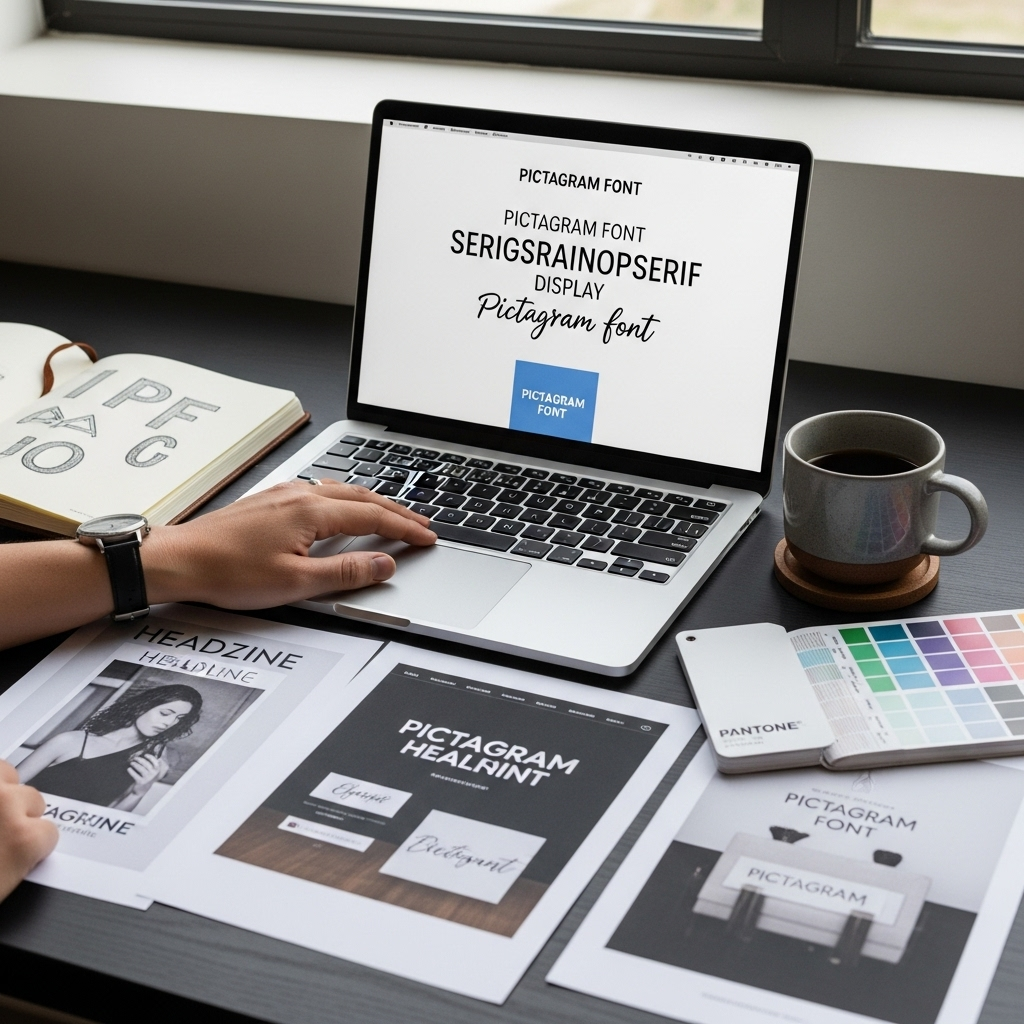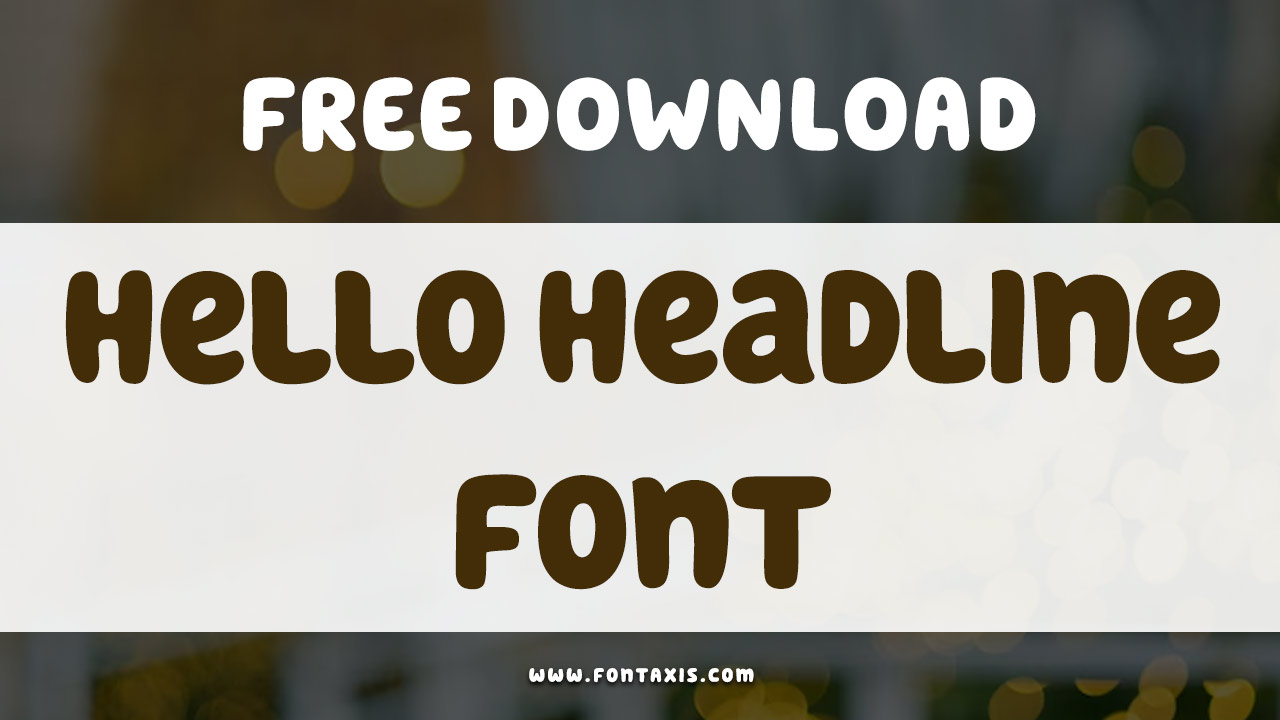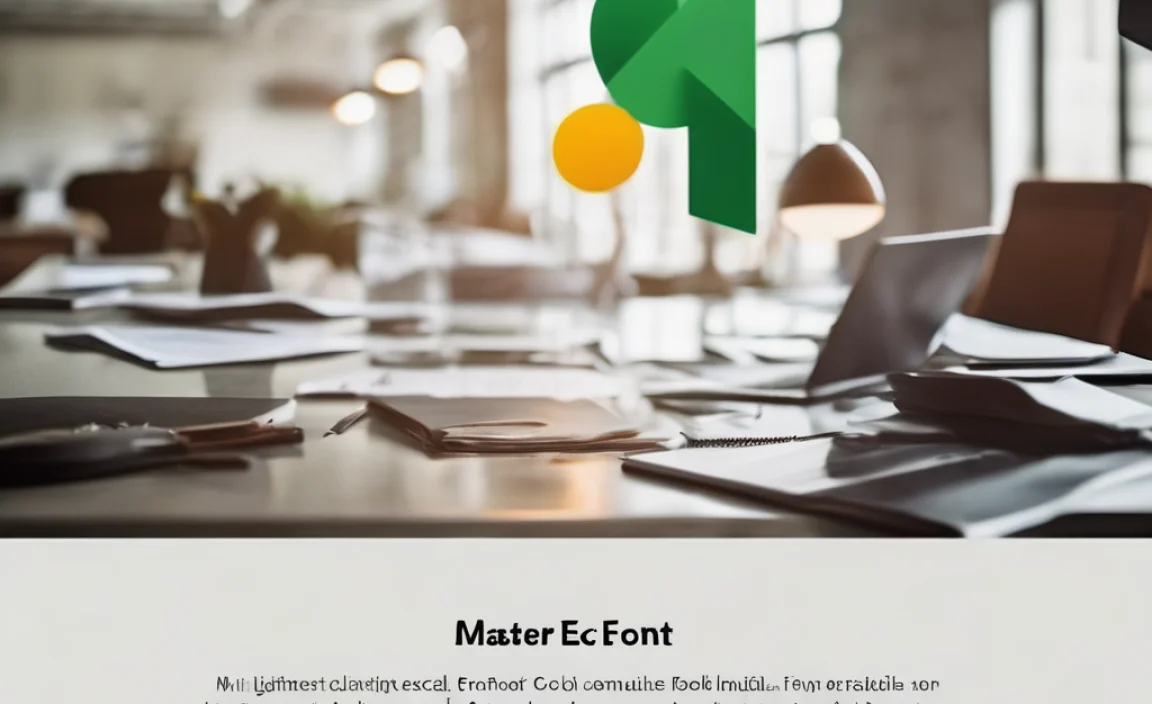The Pictagram Font is a genius essential for adding visual flair and conveying information quickly. It’s a versatile font that blends typographic elements with iconography, making your designs more engaging and understandable for any audience.
You know that feeling when your design needs an extra punch? Something to grab attention or clarify a message without a single word? That’s where a font like Pictagram comes in. It’s not just about letters; it’s about visual communication. Many beginners struggle to find that perfect blend of style and substance, often getting stuck with plain text or overly complicated graphics. But what if there was a font that did both? Pictagram offers a smart, simple solution. This guide will unlock its potential, showing you how to use this brilliant font to elevate your projects, making them clearer, more impactful, and a joy to look at. Get ready to discover how this essential tool can transform your design process.
Unveiling Pictagram Font: More Than Just Letters
Imagine a font that speaks a visual language. That’s Pictagram. Unlike traditional fonts that strictly use alphabetical characters, Pictagram cleverly incorporates small, recognizable icons and symbols directly into its characters. This isn’t about replacing text; it’s about enhancing it. Think of it as a decorative accent and a helpful signpost rolled into one. This unique characteristic makes it incredibly powerful for designers, bloggers, and businesses looking to make their content stand out and communicate more effectively.
What Makes Pictagram Font So Special?
The genius of Pictagram lies in its dual nature. It offers the legibility of a well-crafted typeface while simultaneously providing visual cues that enhance understanding. This is particularly valuable in our fast-paced digital world where attention spans are short and information needs to be absorbed quickly.
Visual Storytelling: Pictagram allows you to tell a story with your text, adding layers of meaning that pure typography can’t achieve.
Enhanced Readability: By subtly embedding icons, it can draw the eye and guide the reader through content, improving comprehension.
Branding Power: Unique fonts like Pictagram can become a signature element of your brand, making it instantly recognizable.
Creative Freedom: It opens up new avenues for creative expression, allowing for playful yet professional designs.
Getting Started with Pictagram Font: A Beginner’s Guide

Using Pictagram is wonderfully straightforward, even if you’re new to typography. The core idea is to treat it like any other font, but with an awareness of its special iconographic nature.
Step 1: Acquiring and Installing Pictagram
First things first, you need to get the font! Pictagram is available from various font marketplaces and sometimes as part of design bundles. Ensure you download the correct file format (usually .ttf or .otf).
1. Purchase or Download: Find a reputable source for the Pictagram font.
2. Extract Files: If the font is in a zipped folder, extract its contents.
3. Install:
Windows: Right-click on the font file (.ttf or .otf) and select “Install.”
macOS: Double-click the font file, then click “Install Font” in the window that appears.
Step 2: Integrating Pictagram into Your Design Software
Once installed, Pictagram will appear in the font list of your favorite design software. This includes popular programs like:
Adobe Photoshop
Adobe Illustrator
Canva
Microsoft Word
Google Docs
Simply select “Pictagram” from the font dropdown menu when you start typing or want to change existing text.
Step 3: Understanding the Special Characters
This is where the magic happens! Pictagram uses specific letter keys or key combinations to render its icons. For instance, instead of typing the letter “A,” you might type “A” to get a specific icon. The documentation that comes with the font (or is available on the seller’s page) will detail which keys correspond to which icons.
Common Pictagram Character Mappings (Example):
| Key Pressed | Resulting Icon | Potential Use |
| :———- | :—————— | :——————————————- |
| `a` | House icon | Home address, residential content |
| `b` | Gift box icon | Sales, promotions, special offers |
| `c` | Camera icon | Photography, visual content, events |
| `d` | Calendar icon | Dates, deadlines, event schedules |
| `e` | Envelope icon | Email, contact information |
| `f` | Star icon | Favorites, highlights, ratings |
| `g` | Gear icon | Settings, technical topics, how-to guides |
| `h` | Heart icon | Love, appreciation, personal stories |
| `i` | Lightbulb icon | Ideas, tips, insights |
| `j` | Map pin icon | Location, travel, directions |
| `k` | Key icon | Solutions, access, important information |
| `l` | Link icon | Web links, connections |
| `m` | Megaphone icon | Announcements, news, calls to action |
| `n` | Newsletter icon | Subscriptions, regular updates |
| `o` | Shopping cart icon | E-commerce, products, purchases |
| `p` | Phone handset icon | Contact number, phone support |
| `q` | Question mark icon | FAQs, inquiries, doubts |
| `r` | Recycle icon | Sustainability, recycling information |
| `s` | Music note icon | Audio content, art, entertainment |
| `t` | Truck icon | Shipping, delivery, logistics |
| `u` | Umbrella icon | Weather, protection, insurance |
| `v` | Video camera icon | Video content, tutorials, live streams |
| `w` | World icon | Global, international, travel |
| `x` | Cross/Stop icon | Warnings, errors, cancellations |
| `y` | Checkmark icon | Success, completion, positive results |
| `z` | Zipper icon | Closure, completion, finished processes |
Note: The specific characters and their corresponding icons can vary slightly depending on the designer’s implementation of the Pictagram font. Always refer to the font’s official guide for precise mappings.
Step 4: Experimenting and Applying Pictagram
The best way to learn is by doing! Start by replacing common letters with their icon equivalents in a sentence or a heading.
For a Blog Post: Use the `i` (lightbulb) icon before listing tips.
For a Contact Page: Use the `e` (envelope) and `p` (phone) icons next to your contact details.
For a Product Description: Use the `o` (shopping cart) or `t` (truck) icons.
Don’t be afraid to mix and match. See how the icons flow with the text and how they enhance the overall message.
Mastering Pictagram: Creative Applications and Best Practices
Pictagram isn’t just a novelty; it’s a powerful tool for strategic communication. Understanding how and where to use it effectively will make a significant difference in your design outcomes.
Where Pictagram Shines Brightest
This font is a dream for content creators, marketers, and designers who want to add a unique visual appeal and improve clarity.
Blogging and Content Creation: Infuse life into bullet points, headings, and calls to action. For example, instead of “Here are some tips,” you could type “💡 Here are some tips.”
Social Media Graphics: Create eye-catching posts with icons that represent the topic or mood. A post about a new song could use a `s` (music note) icon prominently.
Website Design: Use icons in navigation menus, feature lists, or to highlight key services. A real estate website might use an `a` (house) icon near property listings.
Branding and Logos: Integrate Pictagram icons into logos or branding elements for a distinctive touch. A tech company might use a `g` (gear) or `i` (lightbulb) icon.
Presentations: Make slides more engaging and easier to digest by using icons alongside text to emphasize key points, as outlined by university design resources like Harvard University Extension on effective presentation design.
Print Materials: Brochures, flyers, and business cards can benefit from the visual interest Pictagram provides, ensuring messages are delivered with impact.
Dos and Don’ts for Using Pictagram Font
To ensure your designs are effective and professional, follow these simple guidelines:
Do:
Use Icons Strategically: Employ icons where they add genuine value and clarity, not just for decoration.
Keep it Consistent: If you use a Pictagram icon for a specific type of information (e.g., `i` for tips), maintain that consistency throughout your project.
Ensure Readability: Pictagram icons are typically small and designed to complement text. Ensure they don’t overpower the main message or hinder reading flow.
Check Icon Meanings: Verify that the intended icon clearly represents the information it accompanies.
Consider Your Audience: Is the visual language of Pictagram appropriate and understandable for the people you are trying to reach?
Pair Wisely: Combine Pictagram with other fonts that complement its style for a balanced typographic hierarchy. For instance, pairing it with a clean sans-serif or a classic serif can work wonderfully.
Don’t:
Overuse Icons: Too many icons can make a design cluttered and confusing. Less is often more.
Replace Essential Text Entirely: Pictagram icons are supplementary. They work best when they support written content, not replace it entirely, especially for crucial information.
Ignore Font Licensing: Always ensure you have the appropriate license to use the font for your intended purpose.
Expect All Software to Render Perfectly: While most modern software handles custom fonts well, very complex icon fonts can sometimes have rendering quirks. Test your design on different platforms if possible.
Assume Icon Meanings are Universal: While many Pictagram icons are intuitive, some might be ambiguous. Always test with users if clarity is paramount.
Pros and Cons of Using Pictagram Font

Like any design tool, Pictagram has its strengths and potential drawbacks. Understanding these can help you make informed decisions.
| Pros | Cons |
|---|---|
| Enhanced Visual Appeal: Adds unique flair and dynamism to designs. | Potential for Overuse: Can lead to cluttered or unprofessional designs if not used sparingly. |
| Improved Comprehension: Icons can quickly convey meaning, aiding understanding. | Learning Curve for Icons: Users need to know or look up which key produces which icon. |
| Strong Branding Potential: Differentiates your content and reinforces brand identity. | Accessibility Concerns: Screen readers might not interpret icons correctly without proper alt text or semantic HTML. Always provide text alternatives. |
| Time-Saving: Integrates symbols directly into text, faster than sourcing separate icons. | Limited Icon Set: The available icons are fixed; you might need additional icon sets for broader needs. |
| Creative Expression: Opens up new possibilities for playful and innovative design. | Software Compatibility: May occasionally have rendering issues in older or less sophisticated design software. |
Pictagram Font vs. Traditional Fonts: A Comparative Look
To fully appreciate Pictagram, it helps to see how it stacks up against more conventional typefaces.
| Feature | Pictagram Font | Traditional Fonts (e.g., Arial, Times New Roman) |
| :—————– | :——————————————– | :———————————————– |
| Primary Function | Visual communication + text | Textual communication only |
| Iconography | Integrates symbols within characters | Exclusively letters, numbers, and punctuation |
| Visual Impact | High; attention-grabbing, adds flair | Moderate; relies on letterform aesthetics |
| Information Conveyance | Dual: text and symbolic meaning | Single: textual meaning |
| Use Cases | Branding, social media, web design, highlights | General text, body copy, formal documents |
| Readability (Body Copy) | Generally good, but icons can be distracting if overused | Excellent for extended reading |
| Installation | Standard font installation | Standard font installation |
| Learning Curve | Moderate (understanding icon mapping) | Minimal (basic typing) |
When to Choose Pictagram
When you need to add a quick, visual cue to highlight a point.
For branding elements that require a unique, playful touch.
To make social media posts or web banners more engaging.
When creating checklists, short instructional steps, or feature lists.
When to Stick with Traditional Fonts
For the main body text of long articles, books, or reports where pure readability is paramount.
In highly formal or conservative settings where subtle communication is preferred.
When you need a vast range of characters for different languages or specialized symbols not found in Pictagram. For deep dives into typography basics and traditional font types, the Graphic Design Institute’s Glossary on Typography offers excellent foundational knowledge.
Frequently Asked Questions About Pictagram Font

Q1: What exactly is the Pictagram font?
Pictagram is a special type of font that includes small, recognizable icons or symbols embedded within its characters. This allows you to type a letter and have an icon appear instead, adding a visual element to your text.
Q2: How do I find out which keys produce which icons?
Most Pictagram font files come with a “cheat sheet” or guide, often a PDF, that lists which keyboard character corresponds to each icon. You can usually find this information on the website where you downloaded or purchased the font.
Q3: Can I use Pictagram for my business logo?
Yes, you absolutely can! Its unique nature makes it a great choice for creating memorable and distinctive logos. Just ensure you have the correct commercial license if you plan to use it professionally.
Q4: Is Pictagram suitable for body text in an article?
While Pictagram can add flair to headings or bullet points, it’s generally not recommended for long blocks of body text. The icons can become distracting, and traditional fonts are typically better optimized for extended reading.
Q5: Does Pictagram work on all websites and applications?
As long as the website or application allows custom font uploads or uses standard web font embedding, Pictagram should work. However, some older or very basic platforms might not support custom fonts.
Q6: What if I need an icon that’s not in Pictagram?
Pictagram has a specific set of icons. If you need a symbol it doesn’t offer, you’ll need to use a separate icon set or graphic design tool to add those visuals.
Q7: Are there any accessibility considerations when using Pictagram?
Yes, it’s crucial to consider screen readers. If an icon replaces important text, ensure there’s an alternative text description available for users who cannot see the icon. For web use, this often means using ARIA attributes or providing descriptive text alongside the icon.
Elevate Your Designs with Pictagram Font
You’ve now seen how Pictagram font is more than just a decorative typeface; it’s a powerful tool for clear, engaging communication. From its simple installation process to its versatile applications, this font offers a unique way to enhance your blogs, websites, social media, and branding. Remember, the key to mastering Pictagram lies in strategic, thoughtful application. Use its visual cues to guide your audience, add personality to your projects, and make your messages more memorable.
Don’t be afraid to experiment! Play with different combinations, see how the icons interact with your chosen text, and discover what works best for your specific needs. By integrating Pictagram into your design toolkit, you’re not just choosing a font; you’re choosing a smarter, more visually intelligent way to connect with your audience. Happy designing!









